The countdown of the greatest American movies ever made continues…
- King Kong (1933)
I hear it’s a kind of a gorilla.
Since 1933 we have had everything from animatronic sharks to CGI’d dinosaurs, but nothing has yet topped the sense of adventure and thrills of this 82 year-old monster movie.
As crude as the special effects might look to modern eyes, there is life in those stop-motion creatures, especially the title character. The way Kong’s humanity catches you off guard during the iconic climax, how we suddenly pity the beast, is something of a cinematic miracle.
There was no cheating either; no emotionally manipulative skating in Central Park.
- Psycho (1960)
We all go a little mad sometimes.
The first time I saw Psycho was on a nine-inch black and white television courtesy of a UHF station that ran commercials every 10 minutes … and I was absolutely enthralled. For those two hours, Hitchcock played me like a fiddle. I knew nothing about the movie going in, so right up until the end-credits rolled, I was sure Janet Leigh was not dead. She could not be dead. She was the star of the movie for crying out loud. You don’t kill your star an hour in.
By the time the true identity of “mother” was revealed, I was so disoriented, I felt drugged.
Even more impressive is that fact that when you watch Psycho a second or hundredth time, knowing all those twists and turns in advance in no way diminishes the power of marinating in Hitchcock’s mastery of the art form. After the big-budget spectacle of North By Northwest, Hitchcock could do anything he wanted and what he wanted was to go small and tell a story he wanted to tell.
Already fabulously wealthy and famous at age 61, Hitchcock went back to basics and the result was his horror masterpiece.
This song of the Man and his Wife is of no place and every place; you might hear it anywhere, at any time.
The fact that there is only one silent film on this list is a massive failure on my part. There are probably plenty of worthy titles that I just haven’t bothered or had a chance to see. Silent films also don’t play as well as talkies on television. Silents are about the visual impact and need to be seen on a big screen if they are to be fully appreciated.
Although beautiful to look at, there is so much more to recommend in Sunrise — a dream-like, and at times, nightmarish spell cast by director F.W. Murnau that captures nothing less than your full attention.
The Man (George O’Brien) and The Wife (Janet Gaynor) are simple people living in a farmhouse with their new baby. Unfortunately, the man is caught up in an agonizing affair with the Woman from the City (Margaret Livingson). In order for them to be together, she convinces the Man to murder his wife.
Sunrise was German director Murnau’s first American film, and he brought with him the visual canvas of German Expressionism that at times gives Sunrise the unforgettable atmosphere of a fairy tale. Just when you start to get used to this, though, Murnau jars you back to reality with on-location shooting during the film’s middle sequence, which takes place in the city.
The range of emotion you feel throughout Sunrise makes for a completely unique and unforgettable experience. By the final fade, you are exhausted in the best way possible.
Sunrise is one of Hollywood’s most tragic “What ifs?” — as in “What if Murnau had lived?” Sadly, at age 41, the genius director would die in a freak car accident just a few years later. His impact was still profound, however, and for decades lived through another genius, a multiple-Oscar winner Murnau had a profound influence on — John Ford.
See also: Nosferatu, City Girl, Shadow of the Vampire.
- Manhattan (1979)
I’ve never had a relationship with a woman that’s lasted longer than the one between Hitler and Eva Braun.
Only Woody Allen would follow-up winning the Best Picture/Director/Screenplay Oscar for Annie Hall with Interiors, which is very good, but is kind of like following up Raiders of the Lost Ark with The Crying Game. Not that he cared, but Interiors tanked and the next year Allen returned to his audience’s comfort zone with Manhattan, which is even better than Annie Hall.
Allen fully-widened his screen (I think for the only time) as a way to fully embrace his abiding love for the city of New York, and did so in glorious black and white backed by the music of George Gershwin.
And that love is contagious.
- Casablanca (1942)
Well, there are certain sections of New York, Major, that I wouldn’t advise you to try to invade.
Studio filmmaking at its pinnacle. But what can one write that hasn’t already been written about Casablanca? Well, lemme try…
In order for Casablanca to work — in order for it to be a believable story much less a classic, the audience has to believe that a man as alpha, cynical, composed, remote, and tough, as Rick Blaine (Humphrey Bogart) could be emotionally undone by a skirt. There is no amount of studio gloss or hoo doo that can suspend that disbelief. What I means is that on a primal level, a place hidden in our souls that no chicanery can touch, we either buy that massive conceit or the whole movie falls apart.
Ladies and Gentlemen, I give you…
But the endlessly gifted and famously mercurial Ingrid Bergman is the least of it. Great art plumbs the depths of the human condition in such a way that, like a beautiful mountain view or that look in the Mona Lisa’s eyes, we can never quite get enough of it, we can never take it all in; there always seems to be something more, something we missed. No matter how many times you view Casablanca, and just last year I watched it twice in a single afternoon, and then again a few days later, you discover something else — a moment, a look, a glance, a word, a camera angle, that communicates something else, that adds to the experience.
Seventy-five years and seventy-five viewings later, Casablanca still breaks your heart in that elegant way only timeless art can.
- The Band Wagon (1953)
These four walls will be our universe. Our private world. We enter with nothing but a dream. But, when we leave, we’ll have a show!
For a full decade between 1944 — starting with Meet Me In St. Louis and ending in 1954 with Brigadoon — the MGM musical delivered unparalleled human artistry, and director Vincente Minnelli’s The Band Wagon is the cream of that incredible crop.
A thinner-than-thin backstage plot bursting with crackling dialogue (courtesy of screenwriters Adolph Green and Betty Comden), and one remarkable musical number after another. Add to that the graceful artistry of Fred Astaire, the incomparable beauty and movement of Cyd Charisse, and the fabulous and funny support work from Oscar Levant, Nanette Fabray, and Jack Buchanan. They all come together to brew 100% undiluted joy.
For 10 years, the MGM Dream Factory topped Shakespeare, Mozart, and even Michelangelo. Never before or since has every possible human art form — photography, design, writing, music, choreography, performance — been gathered together in such a perfect way.
- The Human Comedy (1943)
I am Matthew Macauley. I have been dead for two years.
Anyone who has been following my movie writing over the last decade or so knows that at every opportunity I champion this beautiful love letter to small town America. Brought to life by underrated studio director Clarence Brown, The Human Comedy was MGM studio head Louis B. Mayer’s favorite film, and it is easy to see why.
The endlessly talented Mickey Rooney would win his second Best Actor nomination for his work here, and did so just the year before he enlisted to fight in WWII, an act he knew would kill his meteoric career (and it did). For entertaining the troops in dangerous combat zones, Rooney won a Bronze Star and four other medals, achievements he was proud of until the end of his long life, and something he said he cherished more than the Oscar he would never (and this is unforgivable) win. In 1983, he was at least awarded an honorary Oscar.
Rooney was not a perfect man, far from it, but for a full decade he was unquestionably the most talented star in Hollywood, and knowing what he gave up to serve his country, the eternal goodwill that engenders, only adds to the experience of watching The Human Comedy.
The Human Comedy is a movie of moments, exquisite moments about the perseverance of the human spirit, about what it means to be a man, an American; to come of age, to be generous, to give a sailor on a short leave the poignant memory of a kiss, something to hold onto (and to fight for) as he heads off to a war he may not return from. My favorite moment, though, is a small one that had a profound impact on me when I caught this gem one late night as teenager.
The wonderful (and always underrated) James Craig plays newspaperman Tom Spangler — or at least what newspapermen used to be before they all strove for celebrity, a man of the people, a populist of sorts. This attitude is severely tested when he falls in love with Diane (a fetching Marsha Hunt) whose family comes from money. Meeting with her parents, who live in the proverbial mansion on the hill, Tom refuses to wear a tie to a somewhat formal dinner party. You see, he wants to remain true to himself and not feel as though he is selling out to a bunch of rich snobs.
But upon meeting Diane’s parents, Tom’s defenses and, yes, prejudices are shattered almost immediately. These are nice people, decent people, who worked hard to achieve their success. On top of that, position and status means nothing to them — only the happiness of their daughter, and if that comes from a lowly newspaperman, so be it. Tom came spoiling for a fight, an opportunity to lecture these so-and-so’s about what’s what. What he found instead were people … just like him.
It is at this point that Tom realizes something — that he is in fact everything he assumed they would be. He is the snob, the superior one, the bigot… And with that shame comes the humble request to borrow a tie.
And that is the overall message of The Human Comedy, one of tolerance for one another no matter our status or background; a reminder that despite our cultural background or annual income, as Americans, we have so much more in common than not. On a simple drive through a cultural festival, Tom lays out the meaning of e pluribus unum better than any Founding Fathers ever could.
The snobs, the nihilists, the bitter, the small — they will only harp on the hypocrisy: racist America was never like that, hate, hate, hate, blah, blah, blah.
Movies like this are not and were never about what America is, they are about what America can be. The Human Comedy is not a mirror, it is a challenge, a cry for us to be better, to aspire, to achieve our potential as neighbors and citizens… Yes, Mayer and Rooney were flawed, sometimes very flawed, but at the very least they are not guilty of the gravest of sins committed almost daily in pop culture today. Despite their immense power and influence, never once did they attempt to pass off their shortcomings as virtues. These were men who recognized their sins but never committed the additional one of poisoning the rest of use by normalizing or romanticizing them.
To write any more, would only risk plagiarizing myself, so here is a link from my 2012 DVD review.
- Apocalypse Now (1979)
You understand, Captain, that this mission does not exist, nor will it ever exist.
In 2001, director Francis Ford Coppola released Apocalypse Now: Redux, which, at 202 minutes, is almost a full hour longer than the 153 minute, 1979 original theatrical release. While I am not normally a big fan of director’s cuts, if only for the fascinating (and lengthy) plantation sequence, I do recommend Redux. Oddly enough, it is almost an entirely different movie from the original, and a very good one.
But it is not as good as the original, which is…
…perfect.
See also: Heart of Darkness: A Filmmaker’s Apocalypse.
- The Ten Commandments (1956)
His god… IS God.
Dear Snobs: From VHS to DVD to Bluray, director Cecil B. DeMille’s final film has been easily available on home video for decades, and at a reasonable and affordable price. Nevertheless…
….this 61 year-old, nearly four-hour biblical epic wins its time slot every year when ABC reruns it on Easter Sunday. And that is with nearly 90 minutes of commercials.
No other movie has ever come close to that achievement. The reason for this is obvious: The Ten Commandments is spectacular entertainment. For work purposes, I once had to watch all 220 minutes three times in just 6 days. Going in I was sure it would be a chore. Nope. The storytelling is so perfect and structured so well, you get sucked in every time.
Arriving by train all the way from the East Coast, DeMille first set foot in Hollywood in 1913. Yes, the superb Southern California weather had already attracted a scattering of other filmmakers, but just as Thomas Jefferson might not have been the first Founding Father, he was THE Founding Father, and the same argument can be made for DeMille and Hollywood.
A heart attack during the grueling production meant that The Ten Commandments would be DeMille’s swan song. It was and still is one of the greatest box office successes of all time.
See also: De Mille’s Samson and Delilah, King of Kings, Sign of the Cross, Cleopatra, The Crusades, Reap the Wild Wind, Union Pacific.
- A Night at the Opera (1935)
I saw Mrs. Claypool first. Of course, her mother really saw her first but there’s no point in bringing the Civil War into this.
Left for dead at Paramount after the box office failure of Duck Soup, MGM producer Irving Thalberg knew timeless genius when he saw it and signed the Brothers Marx for A Night at the Opera, which, 80-plus years later, is still, by far, the funniest movie ever made.
People complain about the romance and opera numbers, but both are crucial to understanding just what it is that Groucho, Harpo, and Chico, are systematically (and brilliantly) destroying — which isn’t so much an opera house as it is superior-snobbery. The fact that Margaret Dumont is still a perfect stand-in for today’s priggish Social Justice Warriors, also makes this classic timeless.
Two years later the Marx Brothers would be in production on A Day at the Races when they received the news of Thalberg’s untimely death at age 37.
Movies and the Marx Brothers would never be the same again.
See also: Anything with the Marx Brothers.
- Goodfellas (1990) – Casino (1995)
I’m gonna go get the papers, get the papers.
With Goodfellas director Martin Scorsese not only created cinema’s greatest mob movie, he also delivered the most exhilarating, detailed, and believable tour of any subculture captured in the medium. Scorsese’s world of low-level New York mobsters is as vivid as it is addicting — is a needle in your arm that mainlines a masterpiece directly into the pleasure sensors of the brain.
—
A lot of holes in the desert, and a lot of problems are buried in those holes.
Casino is the perfect bookend to Goodfellas, and one that boasts two of the best performances of the decade. In a dazzling performance, James Woods somehow manages to be hilarious, sympathetic, and one of cinema’s all-time creepiest creeps as low-life. drug-dealing pimp Lester Diamond (what a great name). But it is Sharon Stone as the beautiful, dangerous, and doomed Ginger who should have taken home all the Oscars that year.
I would be remiss if I didn’t mention Nicholas Pileggi, the marvelous crime writer who brought both of these true stories to life in book form, and then again through a couple of amazing screenplays.
- The Adventures of Robin Hood (1938)
Why, you speak treason!
Fluently.
The Mighty Errol Flynn remains the only leading man in history who looked perfectly comfortable dressed in a tuxedo or trench coat, as a cowboy or military man, as a pirate, and even in tights. There was no one else like Flynn, and there never will be. And the UltimateMaximus Errol Flynn can be found in The Adventures of Robin Hood. Flynn was born for this role. Moreover, the exquisite and delicately beautiful Olivia de Havilland was born to play his Maid Marian (they would co-star in a total of 9 films).
In gorgeous Technicolor, director Michael Curtiz captures Robin of Loxley’s rakish charm and steely determination, the joy of being one of the Merry Men, one of cinema’s great sword fights, and a movie star’s movie star at the prime of those unique gifts that would make him immortal.
- Cool Hand Luke (1967)
I can eat fifty eggs.
The Christ story as told through reprobate Luke Jackson (Paul Newman), a prisoner on a Southern chain gang, who doesn’t so much die for our sins as much as for the establishment’s ongoing sins against the human spirit and the most vulnerable minority of all — the individual; the cause of the one man who hears his own drummer, marches to it, and asks only to be allowed to live and let live.
As Luke’s Judas, George Kennedy won his Oscar. The rest of the cast includes the wonderful Strother Martin as Pontious Pilate, along with a who’s who of exceptional characters actors from that era who make up Luke’s apostles: Dennis Hopper, Ralph Waite, J.D. Canon, Luke Askew, Wayne Rogers, Harry Dean Stanton, and Anthony Zerbe.
Newman hits a charismatic high-water mark, not just in his own career but also in his medium, in what is now and forever will be the best movie ever made about fighting and outsmarting an oppressive system that demands sterile, uniform conformity.
Dare I say that Cool Hand Luke is the ultimate handbook in how to be an American.
- Notorious (1946)
I couldn’t see straight or think straight. I was a fat-headed guy, full of pain.
Psycho is director Alfred Hitchcock’s horror masterpiece. Notorious is something entirely different. Although the overall story of a woman (Ingrid Bergman) going undercover to root out a nest of Nazis operating out of Rio de Janeiro is plenty suspenseful and full of fascinating intrigue, it is the central love story between Bergman’s fallen angel Alicia and Cary Grant’s Devlin that makes Notorious a unique and agonizingly beautiful movie-going experience.
Grant’s performance as the mercurial, jealous, bitter, tortured Devlin, a man who resents Alicia for making him fall so desperately in love with her, is not just his best performance but one of the screen’s greats.
Romance films only work if you desperately root for the lovers to find a way to be together. What keeps Devlin and Alicia apart is not some dumb screenwriter contrivance or misunderstanding. What keeps them apart is wounded pride, deep psychological pain, and the unspoken. You can see Notorious twenty times — and I have — and at the end you are still screaming, “For God’s sake, Devlin, SAVE HER!”
And after he does, Hitchcock still has one miracle left to finesse: your sympathy for doomed Nazi Claude Rains.
- The Searchers (1956)
I’ve still got my saber, Reverend. Didn’t beat it into no plowshare, neither.
John Ford’s The Searchers is not just the greatest movie ever made, it is number-one by a wide margin. Overall, it is the story of John Wayne’s Ethan Edwards, a mysterious, dangerous, and emotionally devastated man looking to find relief from his loss and pain by losing himself in evil. Edwards is not struggling against the Darkside — on the contrary, he is running towards it, hoping its embrace will reward him with some relief from his own anguish.
Underneath, using the backdrop of his beloved Monument Valley (in glorious Technicolor VistaVision), Ford paints on a much larger canvas to tell the story (which is partly true) about a young girl (Natalie Wood) kidnapped by Indians.
Overall, though, The Searchers is about the imperfect men and steely women it took to win the West.
Ford’s theme is that the enormous price paid for what allows us today to enjoy strip malls, coffee shops, carpool lanes, and central air conditioning, was paid for in more than just blood by brave settlers, the American Indian, and most certainly the souls of men like Edwards.
The Searchers’ justly famous closing scene — still the greatest in all of film — is not only a tribute to actor Harry Carey (a father figure to Wayne), but a poignant and wordless reminder that there is no place in civilization for those who made that civilization possible.
Wayne’s performance is the finest you will ever see in any motion picture. Like the film itself, the depth of artistry in the Duke’s portrayal reveals something different with every viewing.
—–
A closing note: On DVD and Bluray, I own some 3700 movies. That number might sound outrageous, like the creation of an impulse buyer/hoarder, but nothing could be further from the truth. Every title in that collection means something to me. If you removed the monetary value, not a single one of those discs — not Death Wish V or Vegas Vacation — would I trade for all the contents of any art museum. Selecting 165 titles from that collection was agonizing, and any title that made the cut means that in its own way it is a #1.
The film industry lost its way some 20 years ago. There is no question about that. The unbroken spell that comes from competent storytelling and compelling characters is now an afterthought to spectacle, politics, lectures, nepotism, provincialism, and political correctness. And while that is a real shame, even though I have been in love with the movies for 40 years, I hardly notice. There is so much of Hollywood’s past still left for me to discover that at age 52, I fear I might run out of time. I also fear that I may never get to see those I have already discovered enough times. How is that for a luxury problem?
Movies are islands, narcotics, gifts, treasures, escapes, getaways; miracles of insight, not only into the men and women up on that screen, but the gods who created them. No other art form comes close.
I have stood in the Vatican and gaped in awe at the ceiling of the Sistine Chapel — I still prefer The Agony and the Ecstasy. I have vacationed at Monument Valley, a majestic experience that still does not compare to a screening of She Wore a Yellow Ribbon. I have swam in the Pacific, body surfed in the Atlantic, sailed in the Gulf, toured Rome, visited Disney World, cruised the Caribbean, seen Elvis and Sinatra perform live, and have twice driven across this beautiful country ours. All wonderful experiences, cherished memories, touchstones. But nothing will ever compare to the promise of that moment when the lights go down…
Nothing.
<16-40>
***Below is the list of the 351 films first considered for this list. They are in alphabetical order.
| A.I. |
| 48 Hours |
| Ace In The Hole |
| Adventures of Robin Hood, The |
| African Queen, The |
| All Quiet on the Western Front |
| All the President’s Men |
| American Graffiti |
| American Movie |
| Americanization of Emily |
| Anatomy of a Murder |
| Animal House |
| Annie Hall |
| Apocalypse Now |
| Asphalt Jungle |
| Assassination of Jesse James |
| Avalon |
| Back to the Future |
| Bad and the Beautiful |
| Bad Lieutenant |
| Badlands |
| Ball of Fire |
| Bambi |
| Bandwagon |
| Bank Dick |
| Battleground |
| Beautiful Girls |
| Bend of the River |
| Ben-Hur |
| Best Years of Our Lives |
| Big Chill |
| Big Country |
| Big Heat |
| Big Sleep |
| Birdman of Alcatraz |
| Blackboard Jungle |
| Blade Runner |
| Blazing Saddles |
| Blue Collar |
| Blue Velvet |
| Body Double |
| Body Heat |
| Body Snatcher |
| Bond Movies |
| Born on the 4th of July |
| Braveheart |
| Bridge On the River Kwai |
| Butch Cassidy |
| Call Northside 777 |
| Cape Fear |
| Captain Blood |
| Captains Courageous |
| Capturing the Friedmans |
| Casablanca |
| Casino |
| Cavalry Trilogy |
| Changeling |
| Charley Varrick |
| Chasing Amy |
| Chato’s Land |
| China Syndrome |
| Chinatown |
| Christmas Story |
| Christmas Vacation |
| Citizen Kane |
| City Lights |
| Clockwork Orange |
| Close Encounters |
| Command Decision |
| Conversation |
| Cool Hand Luke |
| Country Girl |
| Crimes and Misdemeanors |
| Dances with Wolves |
| Dark Knight |
| Dark Victory |
| Dawn of the Dead |
| Days of Wine and Roses |
| Dazed and Confused |
| Dead End |
| Dead man Walking |
| Death Wish 2 |
| Deer Hunter |
| Defiant Ones |
| Deliverance |
| Destination Tokyo |
| Die Hard |
| Dirty Dozen |
| Dirty Harry |
| DOA |
| Dodsworth |
| Dog Day Afternoon |
| Double Indemnity |
| Dr. Ehrlich’s Magic Bullet |
| Dracula |
| Dressed to Kill |
| Duck Soup |
| East of Eden |
| Easy Rider |
| Ed Wood |
| Edge of Darkness |
| El Cid |
| Electra Glide In Blue |
| Elmer Gantry |
| Emperor of the North |
| Enter the Dragon |
| Escape From New York |
| ET |
| Exorcist |
| Field of Dreams |
| Fight Club |
| Five Easy Pieces |
| For a Few Dollars More |
| Forrest Gump |
| Franken Stein |
| Freaks |
| French Connection |
| Frenzy |
| From Here to Eternity |
| Full Metal Jacket |
| Fury |
| Gathering |
| Ghost Breakers |
| Gilda |
| Glengarry Glen Ross |
| Glory |
| Godfather I and 2 |
| Going My Way |
| Gone with the Wind |
| Good Earth |
| Goodbye Girl |
| Goodfellas |
| Graduate |
| Grand Hotel |
| Grapes of Wrath |
| Great Escape |
| Grizzly Man |
| Gun Crazy |
| Gunga Din |
| Halloween |
| Hannah and Her Sister |
| Heat |
| Heiress |
| Henry: Portrait of a Serial Killer |
| High Noon |
| High Sierra |
| Hills Have Eyes |
| His Girl Friday |
| Hit the Ice |
| Hoosiers |
| How Green Was My Valley |
| Hud |
| Human Comedy |
| Hustler |
| I am a Fugitive from a Chain Gang |
| I Remember Mama |
| I Want to Live |
| In a Lonely Place |
| In Cold Blood |
| In the Bedroom |
| In the Heat of the Night |
| Incredibles |
| Informer |
| Inherit the Wind |
| Interiors |
| Invasion of the Body Snatchers |
| Invisible Man |
| It Happened One Night |
| It’s a Gift |
| It’s a Wonderful Life |
| Jackie Brown |
| Jaws |
| Jeremiah Johnson |
| JFK |
| Johnny Belinda |
| Jolson Story |
| Judgment at Nuremberg |
| Killers |
| Killing, The |
| King Kong |
| King of Kings |
| Kitty Foyle |
| Lady Eve, The |
| Last of the Mohicans |
| Last Picture Show |
| Lawrence of Arabia |
| Lethal Weapon |
| Life of Emelia Zola |
| Life with Father |
| Limey |
| Lion In Winter |
| Little Caesar |
| Lone Star |
| Longest Day |
| Longest Yard |
| Lost In America |
| Lust for Life |
| Magnificent Ambersons |
| Magnificent Seven |
| Magnolia |
| Malcolm X |
| Maltese Falcon |
| Man for All Seasons |
| Man Who Shot Liberty Valance |
| Man with the Golden Arm |
| Man with the Golden Arm |
| Manchurain Candidate |
| Manhattan |
| Manhattan Melodrama |
| Mark of Zorro |
| Marty |
| MASH |
| Matrix |
| Mechanic, The |
| Memento |
| Menace II Society |
| Midnight Cowboy |
| Midnight Express |
| Midnight Run |
| Mildred Pierce |
| Miller’s Crossing |
| Misfits |
| Mississippi Burning |
| Mister Roberts |
| Monry Python’s Meaning of Life |
| Monseiur Beaucaire |
| More the Merrier |
| Mortal Storm |
| Mr. Smith Goes to Washington |
| Mulholland Drive |
| Murder My Sweet |
| Music Man |
| Mutiny on the Bounty |
| My Darling Clementine |
| Near Dark |
| Network |
| Night at the Opera |
| Night of the Hunter |
| Ninotchka |
| No Country for Old Men |
| Norma Rae |
| North By Northwest |
| Notorious |
| On the Town |
| On the Waterfront |
| Once Upon a Time In America |
| One Flew Over the Cuckoo’s Nest |
| Only Angels Have Wings |
| Ordinary People |
| Our Vines Have Tender Grapes |
| Outfit |
| Outlaw Josey Wales |
| Ox-Bow Incident |
| Panic In the Streets |
| Passion of the Christ |
| Paths of Glory |
| Patton |
| Petrified Forest |
| Pink Panther |
| Pink Panther |
| Place In the Sun, A |
| Planet of the Apes |
| Play It Again Sam |
| Pledge, The |
| Point Blank |
| Postman Always Rings Twice |
| Professionals |
| Psycho |
| Public Enemy |
| Pulp Fiction |
| Quiet Man |
| Raiders of the Lost Ark |
| Rear Window |
| Rebecca |
| Red River |
| Requiem for a Heavyweight |
| Richard Pryor Live |
| Ride the High Country |
| Right Stuff |
| Rio Bravo |
| Road to Utopia |
| Robinson Crusoe On Mars |
| Rocky |
| Rosemary’s Baby |
| Rushmore |
| Sand Pebbles |
| Sands of Iwo Jima |
| Scarface |
| Searchers |
| Sergeant York |
| Serpico |
| Set-Up |
| Shadow of a Doubt |
| Shaft |
| Shampoo |
| Shane |
| Silkwood |
| Since You Went Away |
| Singin’ In the Rain |
| Smokey and the Bandit |
| Snow White and the Seven Dwarves |
| Song of Bernadette |
| Sorcerer |
| Spartacus |
| Stalag 17 |
| Star Trek II: Wrath of Khan |
| Star Wars |
| Sting |
| Strangers On a Train |
| Streetcar Named Desire |
| Sullivan’s Travels |
| Sunrise |
| Sunset Boulevard |
| Superman 2 |
| Superman: The Movie |
| Sweet Smell of Success |
| Taking of Pelham 1,2,3 |
| Targets |
| Taxi Driver |
| Ten Commandments |
| Tender Mercies |
| The Front |
| The Pledge |
| The Swimmer |
| They Were Expendable |
| Thunderbolt and Lightfoot |
| To Have and Have Not |
| To Kill a Mockingbird |
| To Live and DieIn L.A. |
| Tootsie |
| Top Hat |
| Touch of Evil |
| Train |
| Treasure of the Sierra Madre |
| Tree Grows In Brooklyn |
| Tucker the Man and His Dream |
| Unforgiven |
| Untouchables |
| Up |
| Used Cars |
| Watchmen |
| Where the Sidewalk Ends |
| White Heat |
| Wild Bunch |
| Wild River |
| Winchester3’73 |
| Witness |
| Wizard of Oz |
| Wolf Man |
| Yankee Doodle Dandy |
| Yearling |
Follow John Nolte on Twitter @NolteNC
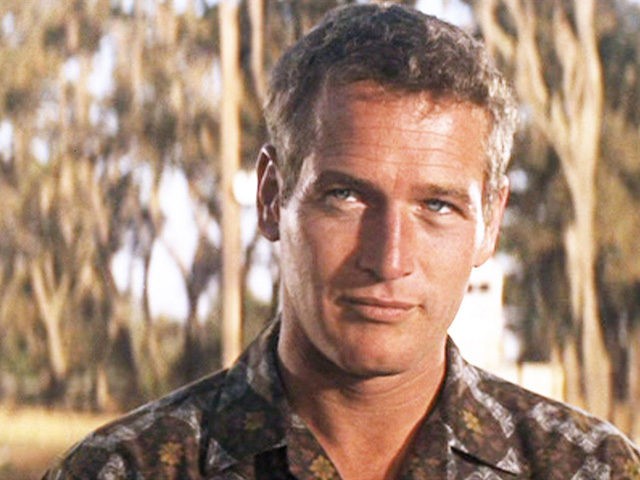
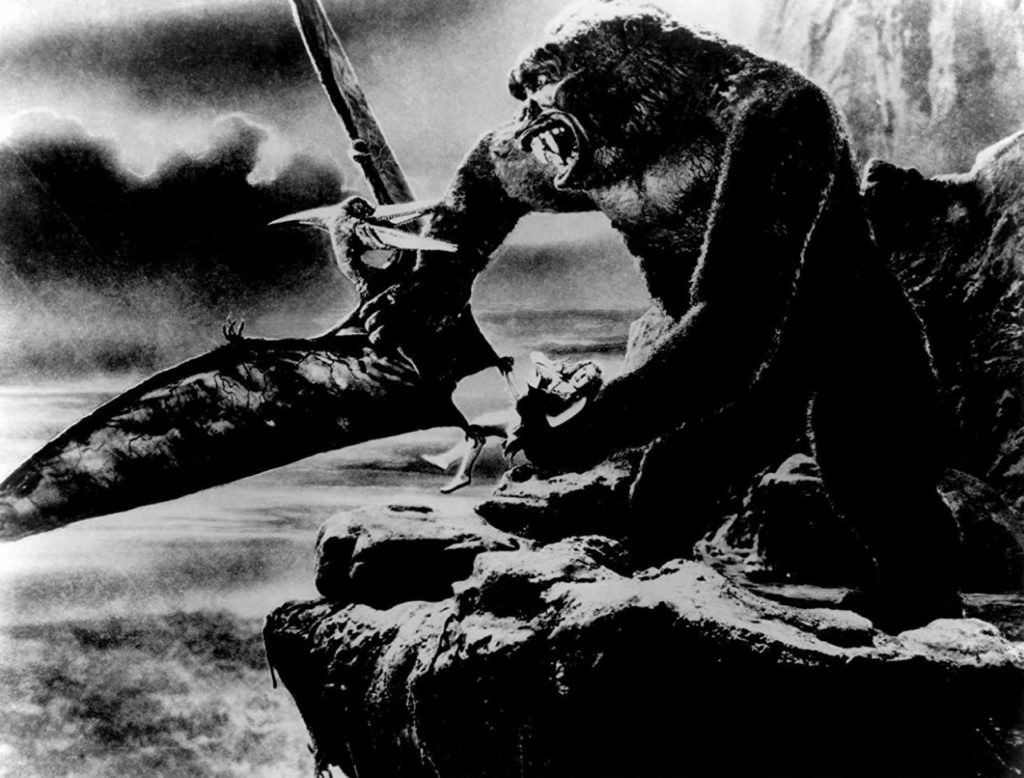
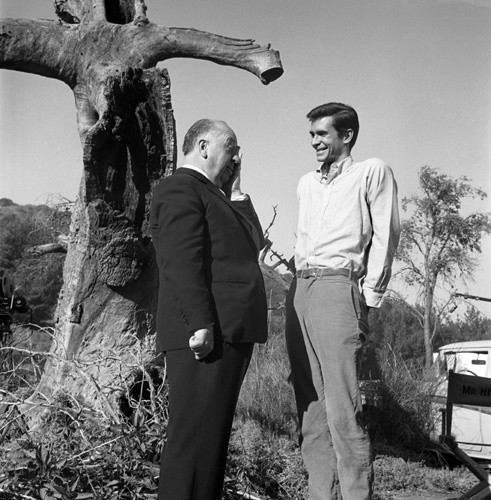
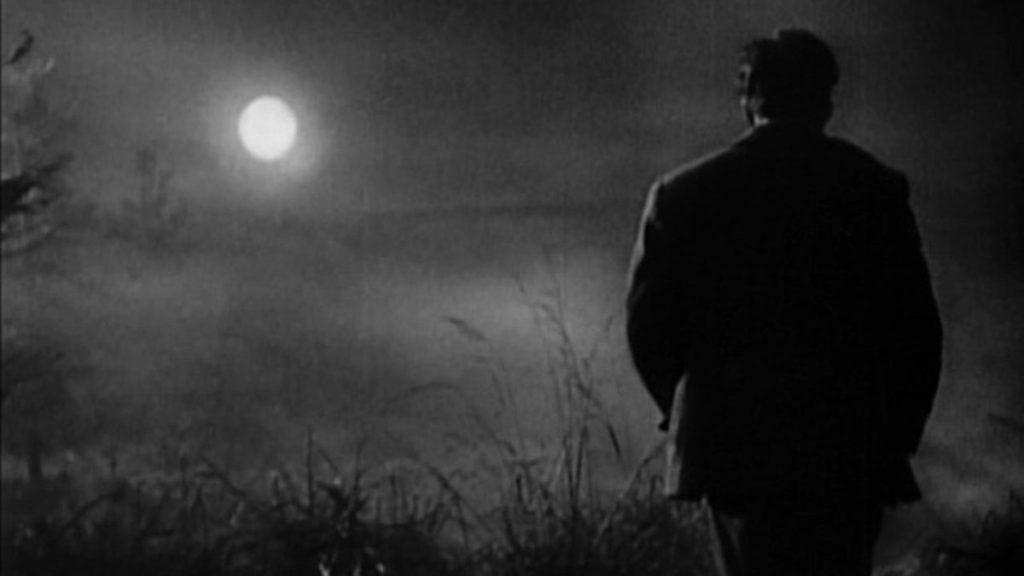
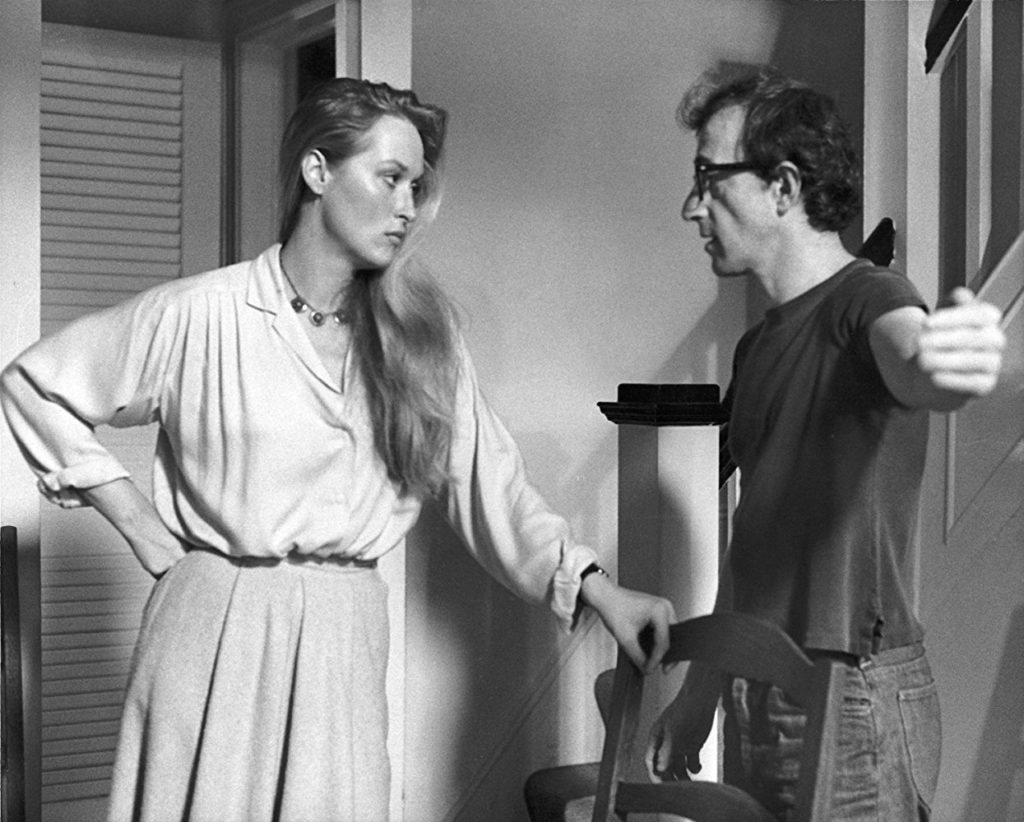

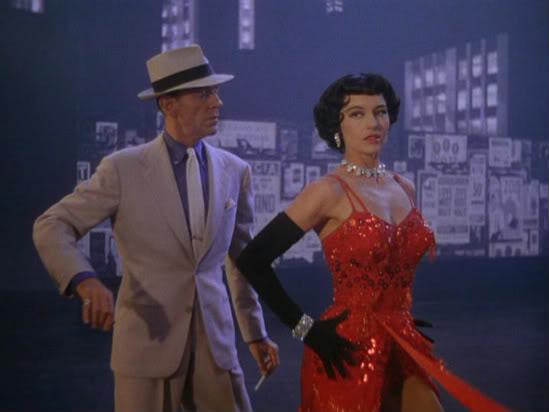
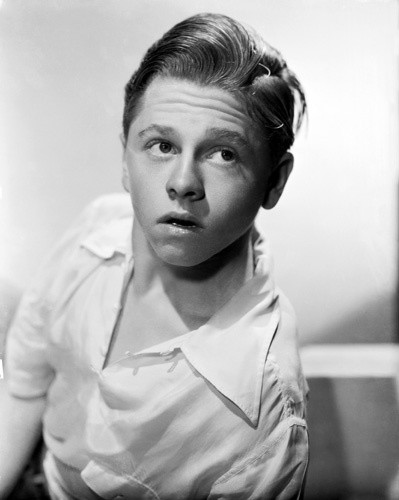
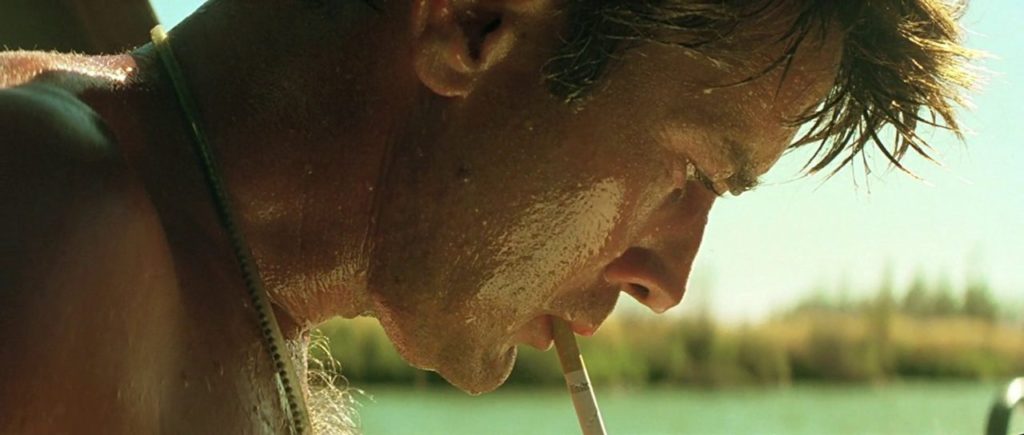
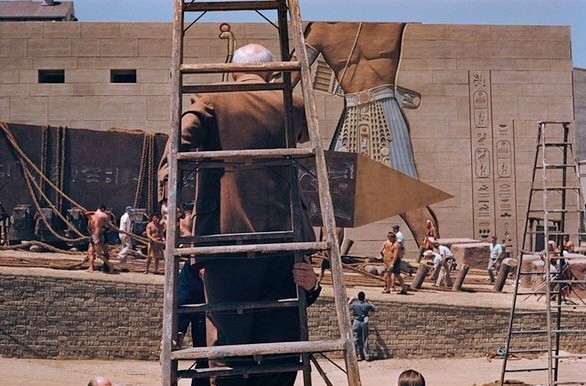
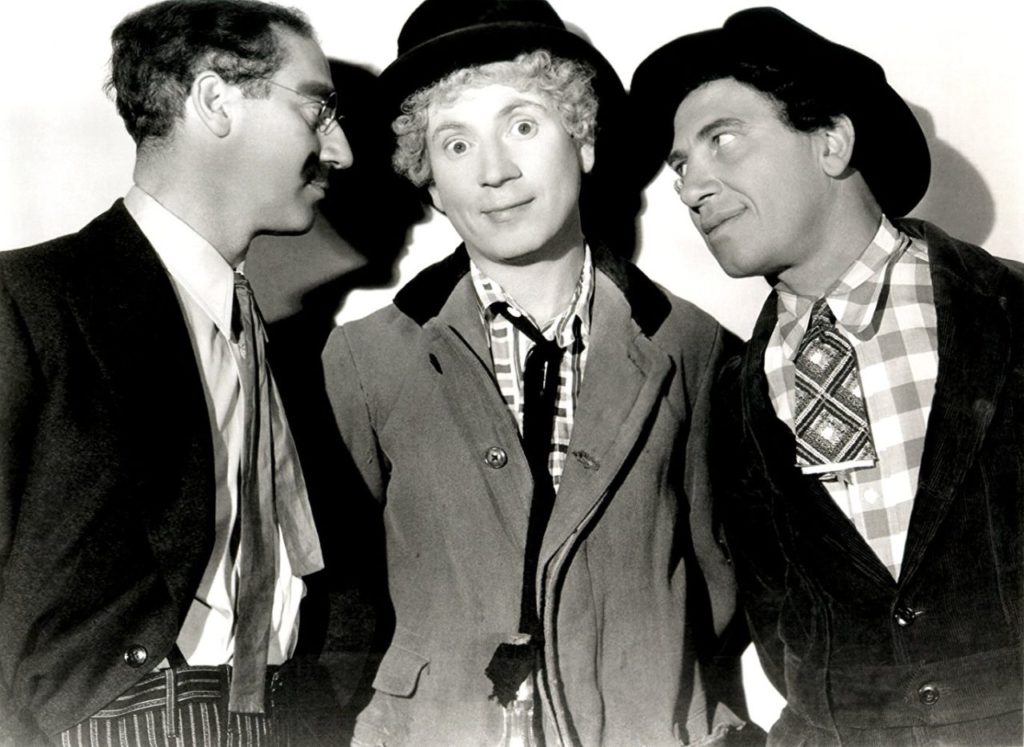
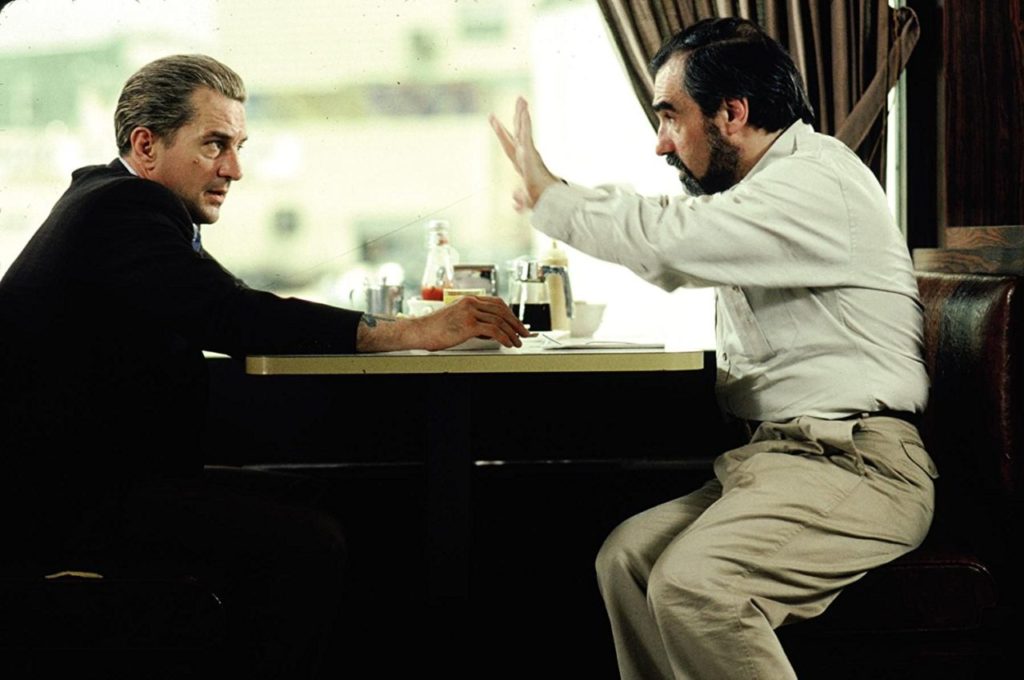
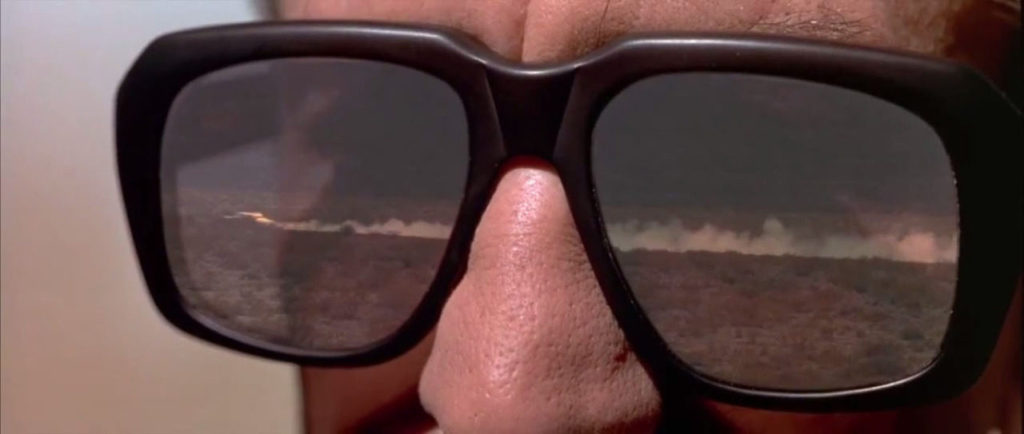
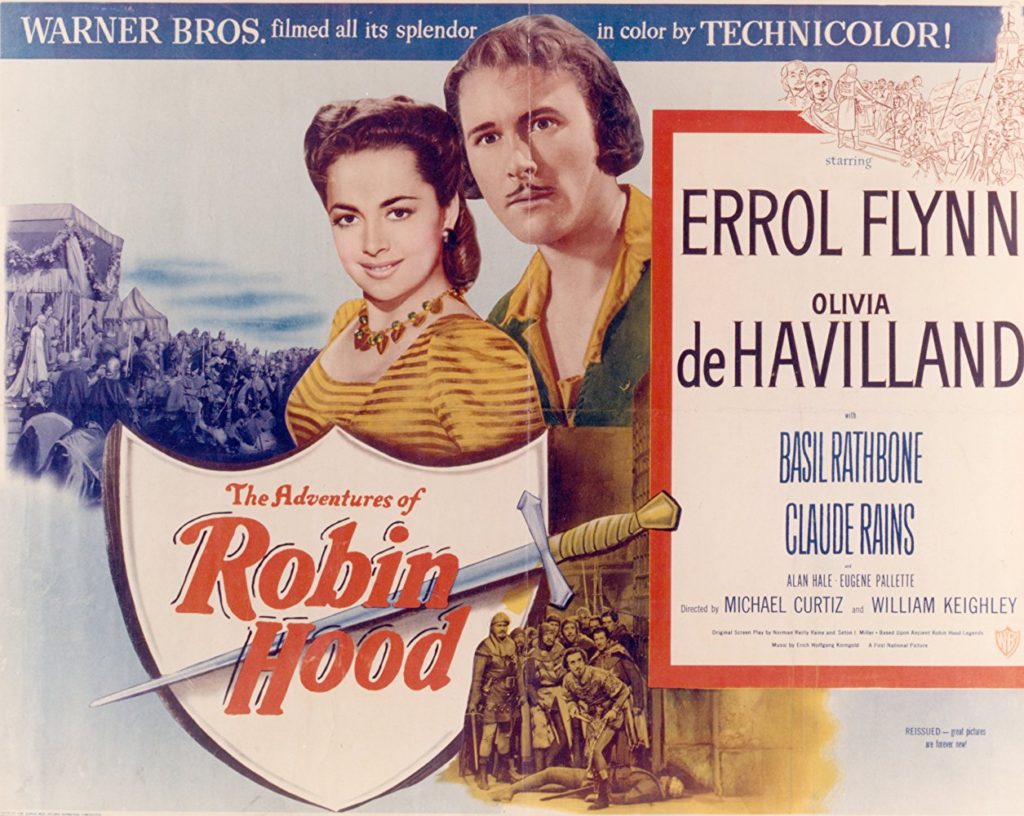
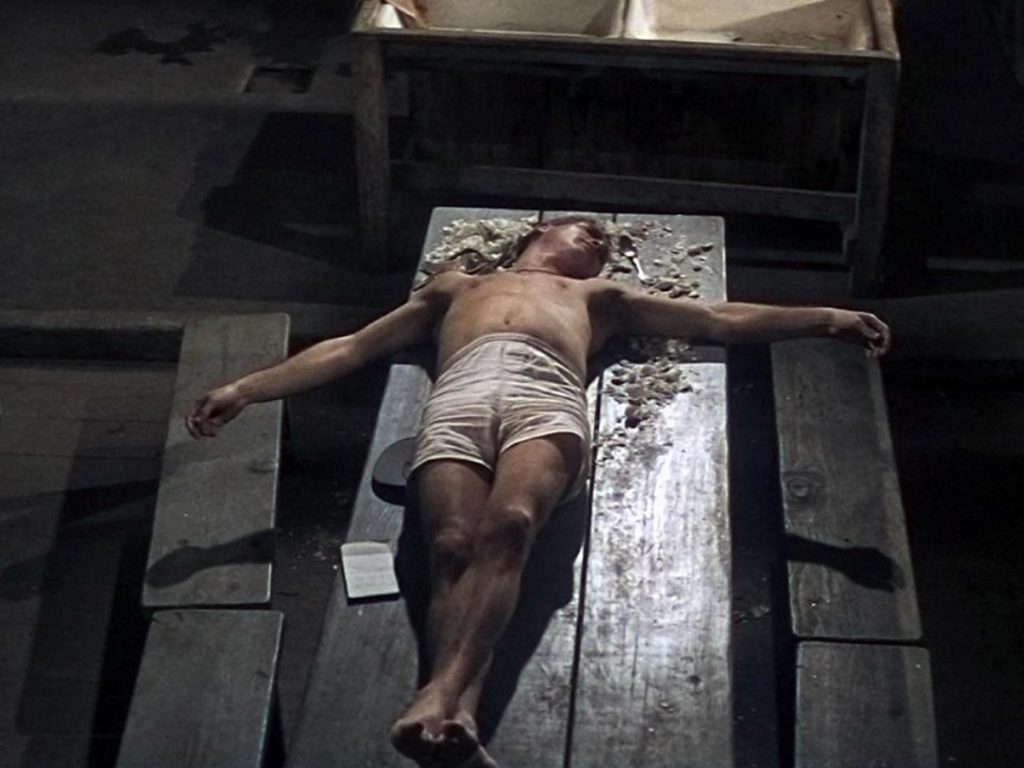
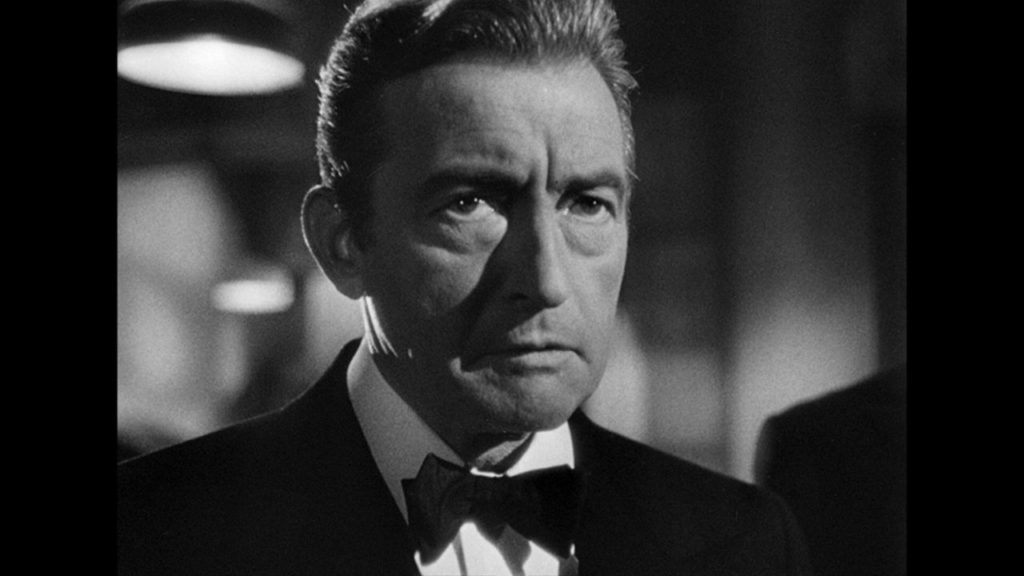
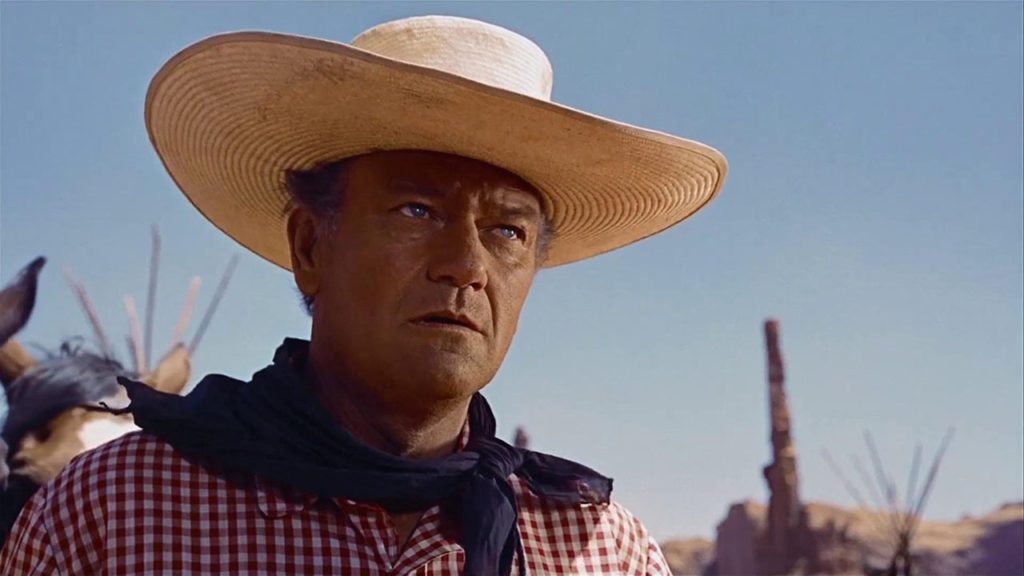
COMMENTS
Please let us know if you're having issues with commenting.